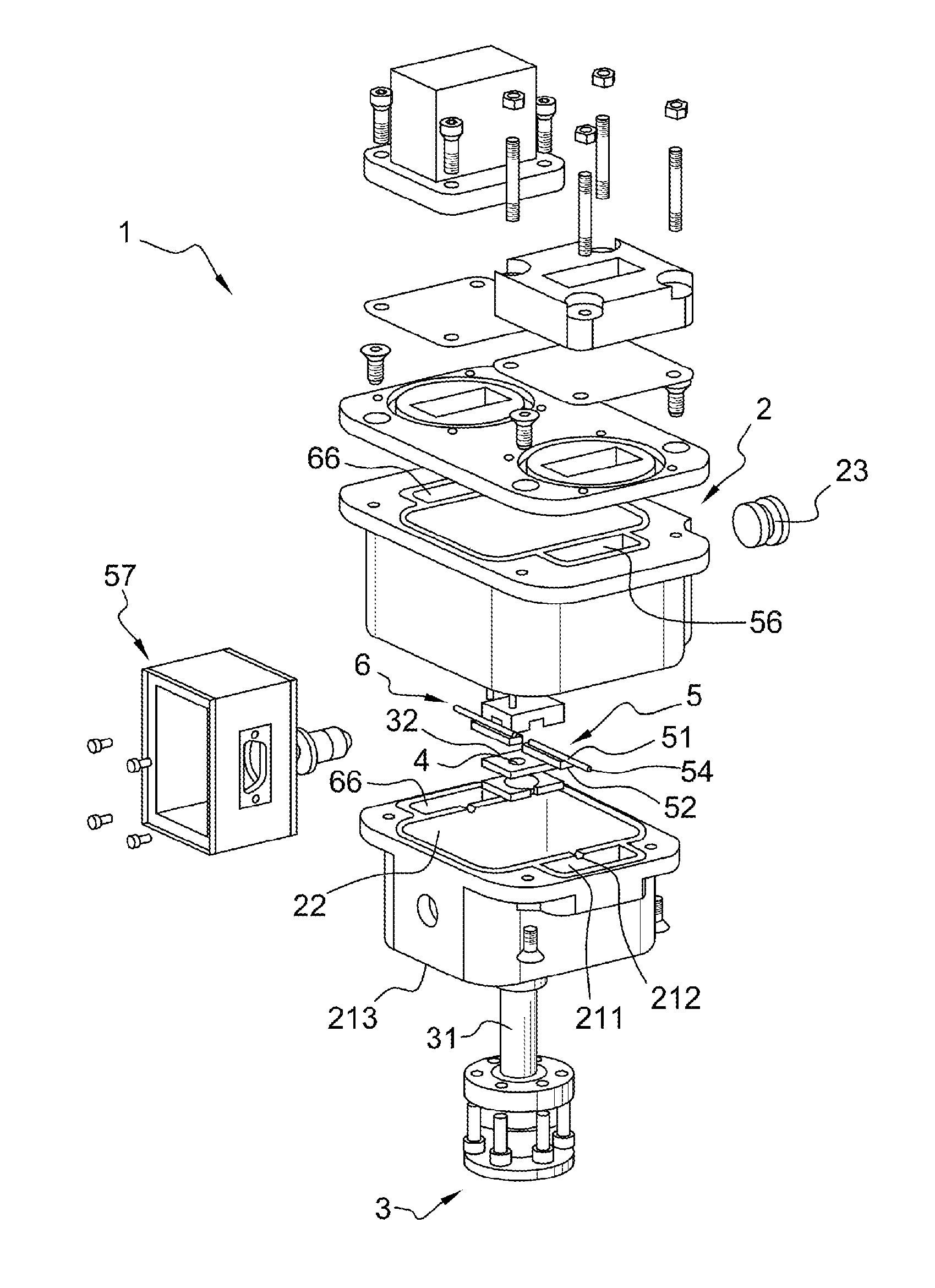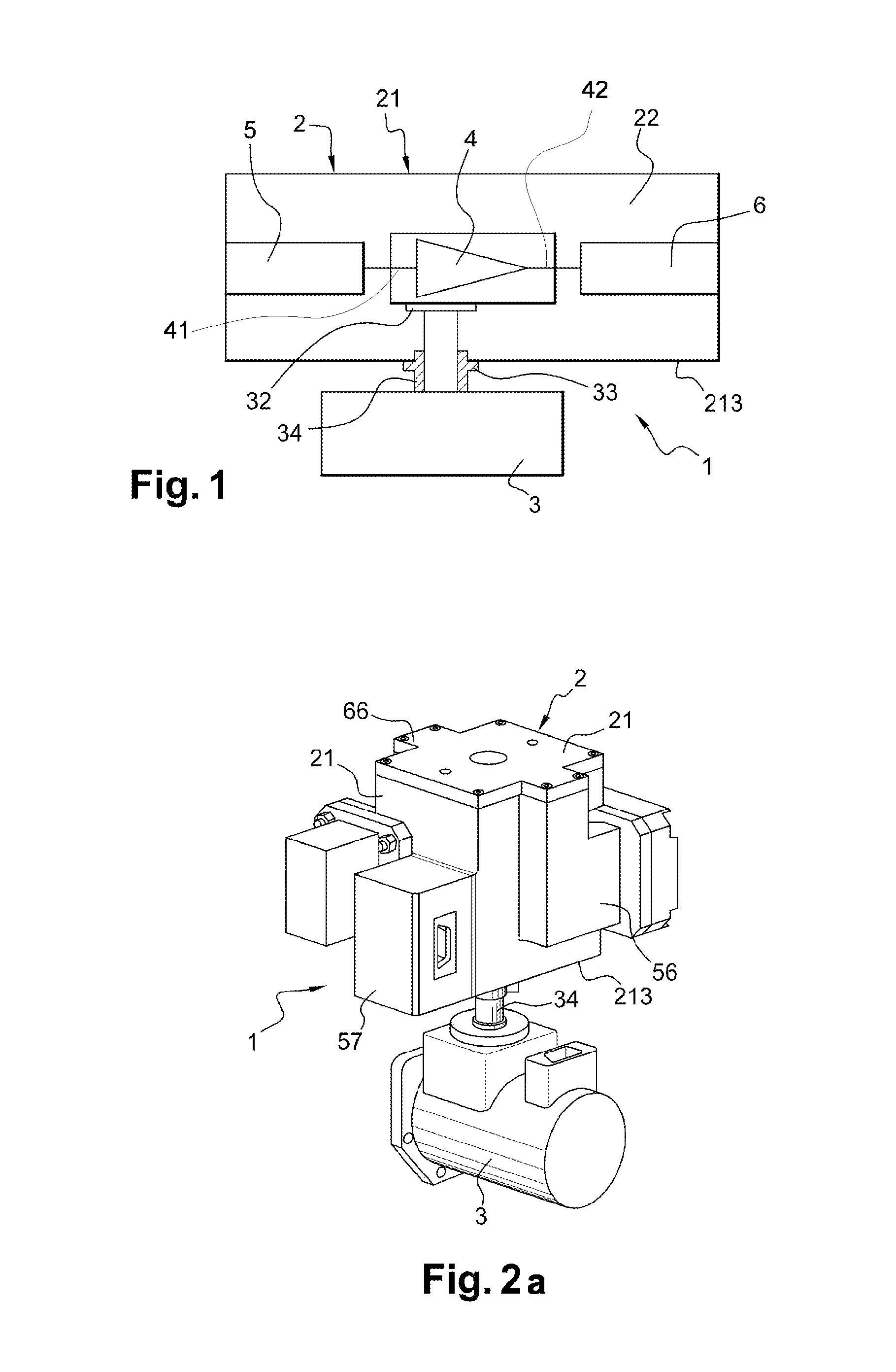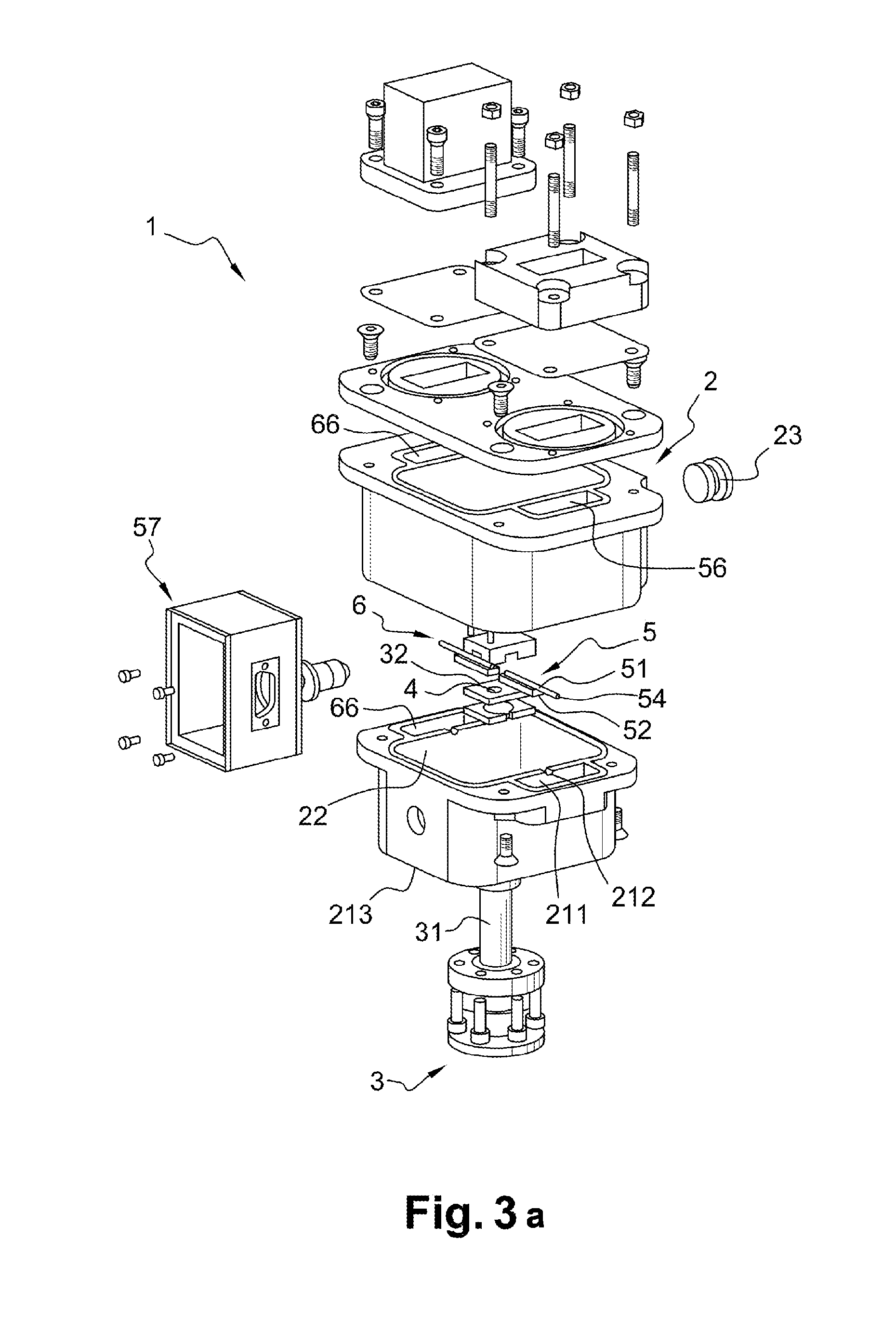Dual-performance low noise amplifier for satellite-based radiofrequency communication
a radiofrequency communication and amplifier technology, applied in the direction of electrical equipment, electrical equipment contruction details, cooling/ventilation/heating modification, etc., can solve the problems of difficult to obtain new allocations of channels in the frequency range of 1 ghz to 18 ghz as covered by these bands, complex control of antenna tracking, and difficulty in obtaining new allocations of channels. achieve the effect of low noise amplifier and enhanced characteristics
- Summary
- Abstract
- Description
- Claims
- Application Information
AI Technical Summary
Benefits of technology
Problems solved by technology
Method used
Image
Examples
Embodiment Construction
[0078]As shown schematically in FIG. 1 and in the perspective views in FIGS. 2a and 2b of an assembled amplifier, a low noise amplifier 1 according to the invention mainly comprises an insulating enclosure or cryostat 2, within which is enclosed an amplifier 4, an input coupler 5, connected to an input 41 of the amplifier 4, and an output coupler 6 connected to an output 42 of the amplifier 4, and a cold source such as a cryogenic cooler 3 on the outside of the cryostat.
[0079]The low noise amplifier 1 to be implemented, is such as those intended for integration in a conventional receiver chain (not shown) at atmospheric conditions, for the reception of RF signals from a satellite.
[0080]A cold finger 31 of the cryogenic cooler 3 traverses through the cryostat wall 21 so that a mounting surface 32 of the cold finger inside the cryostat 2 is in direct contact with a surface of the amplifier 4, or at least with a mounting plate supporting the amplifier.
[0081]The cryogenic cooler can be ...
PUM
 Login to View More
Login to View More Abstract
Description
Claims
Application Information
 Login to View More
Login to View More - R&D
- Intellectual Property
- Life Sciences
- Materials
- Tech Scout
- Unparalleled Data Quality
- Higher Quality Content
- 60% Fewer Hallucinations
Browse by: Latest US Patents, China's latest patents, Technical Efficacy Thesaurus, Application Domain, Technology Topic, Popular Technical Reports.
© 2025 PatSnap. All rights reserved.Legal|Privacy policy|Modern Slavery Act Transparency Statement|Sitemap|About US| Contact US: help@patsnap.com



